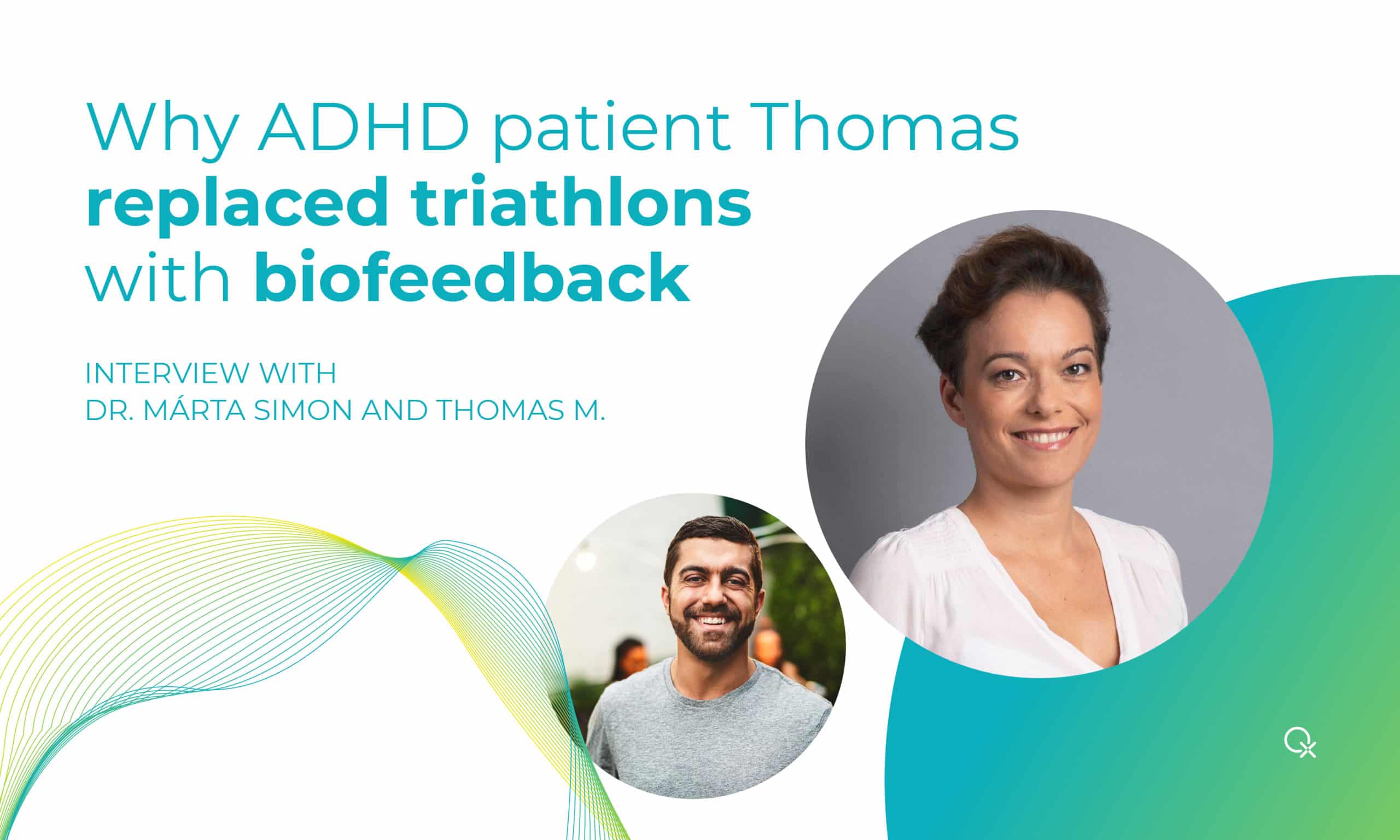
Neurologist Dr. Márta Simon sees clients of all ages at her practice. One of them is triathlon enthusiast Thomas (43). At one point, his struggles with ADHD became so severe that his family life started to suffer. While skeptical of biofeedback at first, Thomas now feels more relaxed and focused than ever. Much to his family’s joy, his weekly triathlons have now become a six-weekly affair.
Thomas: My life was very busy. Extremely busy, even. Being a contractor, I’m always traveling all over the country, and my ADHD was getting so bad that I had to take on weekly triathlons just to get through the days. My wife was unhappy with me almost never being home, and my children were missing their dad. It was my wife who persuaded me to try out biofeedback as a replacement for the extreme exercise I was doing. And I’m glad she did.
Contrary to popular belief, ADHD is not a typical children’s condition. While many children are diagnosed with secondary ADHD due to a sedentary lifestyle and other environmental factors (including poor nutrition and too much screen time), primary ADHD comes down to genetics and is therefore not age-related.
Dr. Simon: Please allow me to answer this one. In people with ADHD, the body craves something that can give the brain a dopamine and adrenaline boost. While many ADHD patients manage to carry on without a coping mechanism, others are prone to developing addictions. Some turn to substances such as nicotine or alcohol, for instance, or adopt certain habits that mimic the effect. In Thomas’ case, his coping mechanism consisted of extreme exercise.
Dr. Simon: During a biofeedback session, a biofeedback device monitors the brainwaves of the frontal lobe. Meanwhile, the client is given a task to complete that requires special focus. For example, they watch a video that is connected to the biofeedback device and must try to make the image stop moving by using brainpower alone. Through repeated practice, the brain figures out how to concentrate for longer periods of time. At the same time, the waves sent out by the biofeedback device have a relaxing effect.
Thomas: I was not a believer at first. But I went to Dr. Simon anyway as a favor to my wife. I was sure that there was no way I would be able to sit in a chair for an hour, especially not with my head and limbs hooked up to a biofeedback system. But I found it so relaxing that I fell asleep after five minutes <laughs>.
Thomas: I like to think so, yes. As well as feeling more relaxed overall, I spend much more time with my wife and two sons. Instead of weekly triathlons, I now do one every six weeks or so. And I’ve even become better at them, too. I asked Dr. Simon to help me prepare for the Iron Man Race, which I recently completed with higher scores than I’ve ever achieved before. A race like that not only requires physical strength but mental energy as well, you know.
Thomas M. (43) is a contractor living in Mogyoród, Hungary. Diagnosed with ADHD at 14, he is an avid triathlete. When not working or exercising, Thomas loves to spend quality time with his wife Elena and their two sons, Endre (10) and Viktor (8).
Dr. Márta Simon is a neurologist, somnology expert and health coach. She lives in Budapest, Hungary where she runs her own biofeedback and natural beauty clinic.
+1 (989) 681-1063
+1 (856) 322-8589